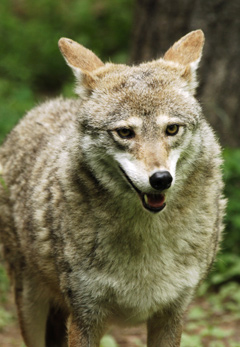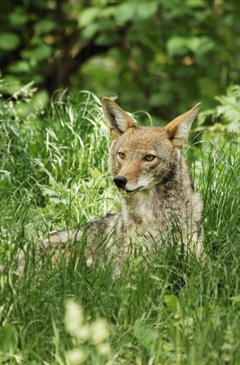Wolves push out coyotes in wilderness areas
Wolves push out coyotes in wilderness areas
mongabay.com
September 11, 2007
  Coyote. Photos by Julie Larsen Maher/Wildlife Conservation Society |
Coyote densities are more than 30 percent lower in areas they share with wolves, according to a paper published in the most recent edition of the Journal of Animal Ecology. The results show that wolves limit the range and number of coyotes in an area.
“The study tests the hitherto unproven hypothesis that wolves limit the range and numbers of coyotes in places where the two species compete with one another,” said Dr. Kim Murray Berger, a WCS researcher and lead author of the study. “In this instance, the findings do support the theory, but coyotes can hold their own against wolves by living in packs.”
The research, conducted in Grand Teton National Park in the southern Greater Yellowstone Ecosystem, found that while few coyotes are actually killed by wolves — about 16 percent of radio-collared animals in the study area — coyotes appear to retreat from areas where wolves are present. The study reports that coyote mortality from humans is almost twice as high (29 percent) as from predation by wolves.
Overall coyote densities were 33 percent lower in wolf-abundant sites in the Tetons while coyote densities declined 39 percent in Yellowstone National Park after wolves were recently reintroduced. Nevertheless coyotes are not threatened by recovering wolf populations. In fact, coyotes thrive in human altered landscapes, even urban areas. The city of Los Angeles has a healthy population of coyotes that scavenge dumps and hunt neighborhood pets as prey.
CITATION: Kim Murray Berger et al (2007). Does interference competition with wolves limit the distribution and abundance of coyotes? Journal of Animal Ecology